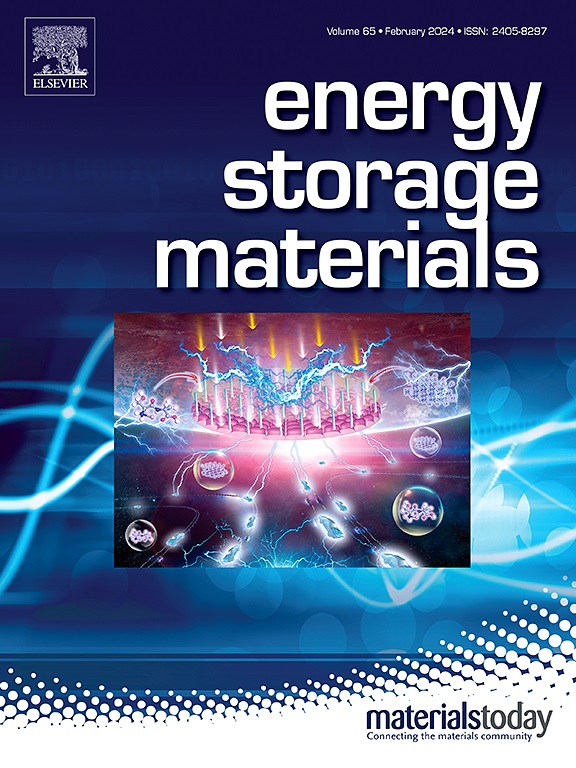Co-intercalation of solvated Mg2+ in amine-chain-expanded VOPO4 cathodes with fast kinetics under high-voltage condition
IF 18.9
1区 材料科学
Q1 CHEMISTRY, PHYSICAL
引用次数: 0
Abstract
Layered cathode materials represent promising candidates for rechargeable magnesium batteries (RMBs). Among them, hydrated vanadyl phosphate (VOPO4∙2H2O) has gained traction due to its relatively high redox potential. However, its limited interlayer spacing leads to sluggish Mg2+ diffusion kinetics and low specific capacity. We address this issue by systematically studying various organic molecules as pre-insertion agents. We introduce theoretical descriptors, including molecular orbital energy levels and adsorption energy of organic molecules on VOPO4 material, to guide the selection of applicable interlayer-expanding agents. Our di-n-butylamine (PD) pre-inserted VOPO4 (PD-VOPO4) cathode exhibited an expanded interlayer spacing from 0.746 nm to 1.42 nm and simultaneously delivered superior stability. It delivered an enhanced specific capacity of 118.5 mAh∙g−1 with a high discharge potential of 2.74 V (vs. Mg2+/Mg) at 50 mA∙g−1, and retained 81.2% of its capacity over 200 cycles. Theoretical calculations and electrochemical characterizations demonstrated that the PD-VOPO4 cathode exhibited faster Mg2+ migration kinetics and a higher intercalation amount, while ex-situ characterization measurements revealed the co-intercalation mechanism of solvated Mg2+. This work offers new insights into the development of high-voltage, stable, and high-capacity layered cathode materials for RMBs.求助全文
约1分钟内获得全文
求助全文
来源期刊

Energy Storage Materials
Materials Science-General Materials Science
CiteScore
33.00
自引率
5.90%
发文量
652
审稿时长
27 days
期刊介绍:
Energy Storage Materials is a global interdisciplinary journal dedicated to sharing scientific and technological advancements in materials and devices for advanced energy storage and related energy conversion, such as in metal-O2 batteries. The journal features comprehensive research articles, including full papers and short communications, as well as authoritative feature articles and reviews by leading experts in the field.
Energy Storage Materials covers a wide range of topics, including the synthesis, fabrication, structure, properties, performance, and technological applications of energy storage materials. Additionally, the journal explores strategies, policies, and developments in the field of energy storage materials and devices for sustainable energy.
Published papers are selected based on their scientific and technological significance, their ability to provide valuable new knowledge, and their relevance to the international research community.
 求助内容:
求助内容: 应助结果提醒方式:
应助结果提醒方式:


